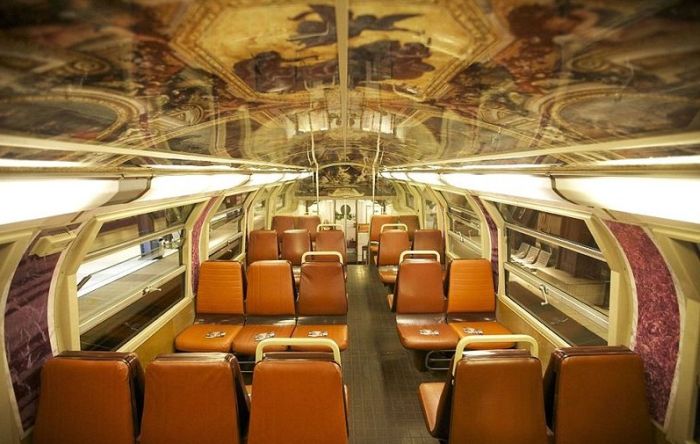|
|
Interior Of Paris - Versailles Train
|
This small château was the site of one of the historical events that took place during the reign of Louis XIII, on 10 November 1630, when, on the Day of the Dupes, the party of the queen mother was defeated and Richelieu was confirmed as prime minister.
• Louis XIV
King Louis XIV, son of Louis XIII, was only five years old when his father died. It was 20 years later, in 1661, when Louis XIV commenced his personal reign, that the young king showed interest in Versailles. The idea of leaving Paris, where, as a child, he had experienced first-hand the insurrection of the Fronde, had never left him. Louis XIV commissioned his architect Le Vau and his landscape architect Le Nôtre to transform the castle of his father, as well as the park, in order to accommodate the court. In 1678, after the Treaty of Nijmegen, the king decided that the court and the government would be established permanently in Versailles, which happened on 6 May 1682.
At the same time, a new city was emerging from the ground, resulting from an ingenious decree of the king dated 22 May 1671, whereby the king authorized anyone to acquire a lot in the new city for free. There were only two conditions to acquire a lot: 1- a token tax of 5 shillings (5 sols) per arpent of land should be paid every year ($0.03 per 1,000 sq ft (93 m2) per year in 2005 US dollars); 2- a house should be built on the lot according to the plans and models established by the Surintendant des Bâtiments du Roi (architect in chief of the royal demesne). The plans provided for a city built symmetrically with respect to the Avenue de Paris (which starts from the entrance of the castle). The roofs of the buildings and houses of the new city were not to exceed the level of the Marble Courtyard, at the entrance of the castle (built above a hill dominating the city), so that the perspective from the windows of the castle would not be obstructed.
|
|









